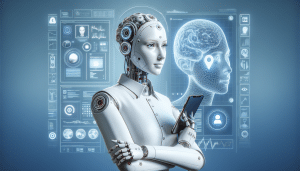Unlocking the Power of Quantum Computing Explained
Oliver Cooper September 25, 2025
Quantum computing is reshaping what’s possible in tech and science, driving innovation far beyond classical limits. This guide dives into quantum bits, quantum algorithms, and the technology’s real-world impact—helping readers grasp the foundations and future of this thrilling field.
Understanding Quantum Computing Basics
Quantum computing stands out as one of the most exciting advances in technology, drawing a clear line between traditional binary systems and a future where quantum bits—or qubits—unlock extraordinary computational possibilities. Instead of simply using 0s and 1s, quantum computers rely on principles of superposition and entanglement. Superposition allows each qubit to represent multiple possible states at once, unlike a classical computer’s single state per bit. This exponential increase in information density is what makes quantum computing such a powerful research topic for tech enthusiasts and scientists alike.
The core distinction between quantum and classical machines comes from harnessing qubits’ unique behaviors. Entanglement is one such property, letting qubits coordinate their states in ways that aren’t possible in conventional computers. Researchers have found that qubits, when carefully entangled, can collaboratively solve certain mathematical problems much faster than today’s most advanced supercomputers. This potential drives growing interest in real-world applications—from cryptography to materials science—which are already being explored in laboratories worldwide (Source: https://www.ibm.com/topics/quantum-computing).
Understanding the basis of quantum computing opens doors to a whole new world of possibilities in technology development. For those considering a tech career, or simply curious about what’s next, keeping up with quantum breakthroughs can inspire a deeper appreciation for how far computing may evolve. With researchers at both academic and corporate levels making rapid advancements, it’s helpful to grasp these fundamentals as they become pivotal to the next era of innovation.
Exploring Qubits and Superposition
At the heart of quantum computing is the qubit, a quantum bit that can exist in more than just the ‘on’ or ‘off’ states familiar from classic computers. A qubit’s superposition means it can hold a 0, a 1, or any quantum blend of these possibilities simultaneously. In practice, this means quantum processors can process enormous amounts of information in parallel, making operations efficient and immensely powerful for certain kinds of tasks. Businesses and researchers are taking notice as this principle lays the groundwork for revolutionary improvements in security, machine learning, and beyond (Source: https://www.nsf.gov/news/special_reports/quantum/qc.jsp).
The way qubits are created and maintained is remarkable in itself. Scientists often use superconducting materials or trap individual atoms, cooling them to extremely low temperatures to maintain stability. This delicate operation keeps quantum information intact and prevents errors caused by interference from the outside environment. Ongoing research continues to optimize these processes, seeking to increase coherence times and minimize quantum decoherence—a core challenge to building scalable quantum systems.
Superposition and entanglement together give quantum computers a unique edge over their classical counterparts. While superposition multiplies the computing power available, entanglement coordinates calculations with remarkable efficiency. By leveraging both concepts, quantum researchers are developing algorithms for factoring, searching, and optimizing that outperform traditional software by a wide margin in some domains. These discoveries continue to redefine what’s possible as quantum technology matures.
Quantum Algorithms: Going Beyond Classical Limits
Perhaps the greatest promise of quantum computing lies in its ability to process complex algorithms that would be intractable with classical machines. Quantum algorithms like Shor’s and Grover’s have garnered global attention for their exceptional problem-solving capabilities. Shor’s algorithm, for example, makes factoring large numbers exponentially faster—a breakthrough that could one day transform cryptography and digital security. Grover’s algorithm accelerates database searches, providing significant advantages wherever fast information retrieval is critical (Source: https://www.scientificamerican.com/article/how-quantum-computers-work/).
What distinguishes these algorithms is the ability to harness quantum parallelism. Instead of testing each possibility one by one, a quantum algorithm evaluates multiple solutions all at once. This massively parallel approach isn’t just theoretical—real quantum processors have already demonstrated these principles in carefully controlled conditions. Ongoing research is tackling everyday use-cases: logistics optimization, medical drug discovery, climate modeling, and more. Each advance brings science closer to practical, widely used quantum software.
Quantum algorithms don’t replace classical ones; instead, they exist alongside them, enhancing capabilities in domains where traditional systems struggle. Businesses and government agencies are exploring how to adapt workflows to leverage both worlds, optimizing overall performance and driving innovation at a global scale. As the technology matures, more industries will be able to take advantage of algorithms designed for the quantum era.
Real-World Applications for Quantum Computing
Quantum computing’s most talked-about applications involve problem-solving on an unprecedented scale. In the pharmaceutical sector, quantum processors can model molecular interactions with great precision, accelerating the search for new medicines. Chemical companies and climate scientists use quantum simulations to investigate reactions, materials, and atmospheric models in finer detail, hoping to unlock solutions for sustainability and global health (Source: https://www.nature.com/collections/ccjxncznbh).
Another leading use is in cryptography. As society depends on digital transactions, quantum computers’ ability to break conventional encryption methods raises both concern and opportunity. Developers are racing to create ‘post-quantum’ cryptography—algorithms specifically designed to remain secure against quantum attacks. This digital arms race highlights quantum computing’s transformative potential, not just for innovation but for safeguarding global information networks.
Outside of specialized domains, quantum computing has the potential to dramatically improve logistics, financial modeling, and artificial intelligence. Large corporations are already invested, forming quantum research partnerships with universities and labs. Such collaborations are critical to exploring new algorithms and hardware designs, accelerating the transition from research to real-world deployments that could reshape everything from supply chains to smart cities.
Challenges and Future Prospects in Quantum Computing
Despite breakthrough experiments, significant barriers stand in the way of quantum computing’s mainstream adoption. Quantum systems require extremely controlled environments, shielding qubits from heat, radiation, and even slight magnetic fields. Maintaining quantum coherence poses a daunting engineering challenge, often necessitating equipment that’s expensive and energy-consuming. Research teams worldwide compete to increase qubit numbers and stability, racing to build a truly fault-tolerant quantum computer (Source: https://www.nist.gov/programs-projects/quantum-information-program).
Much of the progress depends on advances in both hardware and software. Engineers explore new materials, circuit designs, and error-correcting protocols, while programmers develop ever more efficient quantum algorithms. Organizations are allocating significant resources to quantum education—offering free online courses and coding tools for enthusiasts who want to participate in this fast-evolving ecosystem. As knowledge spreads, so too does the base of talent ready to tackle quantum’s complexities.
Looking ahead, the integration of quantum computers into everyday life seems closer than ever. Hybrid systems, combining classical and quantum processors, are likely stepping stones that help bridge the gap between theory and practical use. As access broadens and costs drop, more industries will benefit—spurring a new wave of technological growth and opportunity. The story of quantum computing is only just beginning, with many discoveries yet to come.
Learning Opportunities and How to Stay Informed
For readers inspired by the future of quantum computing, there are plentiful learning resources and experiential opportunities available. Major tech companies now offer open-access quantum computers in the cloud, letting learners run real experiments and design their own algorithms. Comprehensive courses from providers like edX and Coursera cover quantum theory, programming languages for quantum hardware, and hands-on labs—making the subject more accessible than ever (Source: https://quantum.country/qcvc).
Keeping up with industry trends can be as simple as following newsletters, blogs, and major conferences. Leading organizations—both academic and corporate—regularly publish updates on hardware breakthroughs, new applications, and quantum software tools. Online communities on forums and social media support learners at all stages, connecting novices with professionals in the field. This support network fosters enthusiasm and collaboration across borders.
As quantum computing matures, the importance of education, diversity, and global cooperation will only intensify. Anyone can begin exploring quantum concepts, with introductory materials available for free and advanced programs offering deep dives into the science and engineering. Staying curious and connected is key—allowing individuals to follow the rapid evolution of a technology set to change the world.
References
1. IBM. (n.d.). What is quantum computing? Retrieved from https://www.ibm.com/topics/quantum-computing
2. National Science Foundation. (n.d.). Quantum: The Science of the Small. Retrieved from https://www.nsf.gov/news/special_reports/quantum/qc.jsp
3. Scientific American. (n.d.). How Quantum Computers Work. Retrieved from https://www.scientificamerican.com/article/how-quantum-computers-work/
4. Nature. (n.d.). Quantum computing collection. Retrieved from https://www.nature.com/collections/ccjxncznbh
5. National Institute of Standards and Technology. (n.d.). Quantum Information Program. Retrieved from https://www.nist.gov/programs-projects/quantum-information-program
6. Quantum Country. (n.d.). Quantum Computing for the Very Curious. Retrieved from https://quantum.country/qcvc







